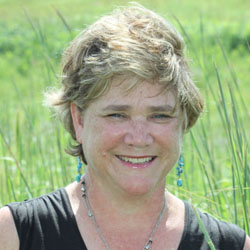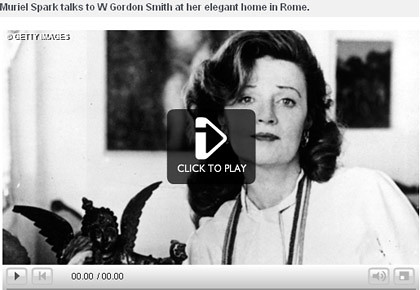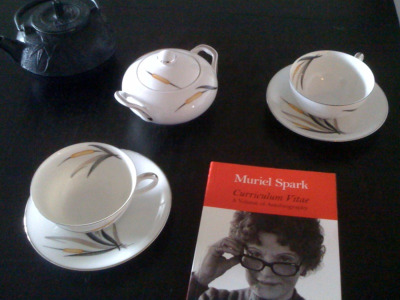When you write an author bio, what you include depends on, well, you.
Bio for Query
Writing a query letter requires a compressed bio of just a couple sentences.
Here, you want to touch on the highlights of your career. I might write:
Published in eight languages, I have books with Greenwillow/Harpercollins, Philomel/Penguin, Houghton Mifflin Harcourt and Sylvan Dell. My website, www.darcypattison.com, has half a million visitors each year.

Just as you need a bio ready for multiple purposes, you should have author photos ready. I try to have a photo in 100x100 pixels, 250x250, 500x500 and at least one with a 300 dpi (high resolution) for print situations.
What if you have no publishing credits or background? Not to worry. Say nothing, unless it directly relates to the manuscript you are submitting. In this case, the manuscript will stand on it’s own, without the ever-so-slight prop of a bio.
Include work history? Probably not, unless it directly relates to your story.
I might write:
The main character is hearing impaired and I hold a Masters Degree in Audiology (doing hearing tests) and have worked for the Arkansas School for the Deaf.
Otherwise, your lips are sealed. Nothing about grandchildren who love your story; nothing about jobs that don’t directly relate; nothing about the newspaper who interviewed you about your invention that has nothing to do with this manuscript. Everything must relate to THIS manuscript. Otherwise–mums the word. Absolutely, no padding.
Expanded Bios
There are times for a longer bio, on your blog or when you send out press releases about your new book, that’s the place to list everything–if you like. For example, when my new picture book Desert Baths (a story about how desert animals take baths) comes out in late August, I’ll be ready with standard bios to send around with the press release.
I try to condense everything into a one-page document, because, really, who will read every word? I keep an updated bio that has a letterhead with all my contact info (email, phone, fax, mailing address), and just print this out and slip into an envelope or attach to an email. If appropriate, sometimes, I’ll take a yellow highlighter and make something jump out. For a picture book submission, I might emphasis that The Journey of Oliver K. Woodman was an honor book for the 2003 Irma S. and James H. Black Picture Book Award from Bank Street College.
Bios, in this sense, aren’t curriculum vitae, which are academic biographies which list all your publications, your speaking engagements, work history academic history, etc.. I keep one of those up to date, but rarely use it because it’s too long to send around easily; if any one asks, though, I’ve got it and don’t have to create it.
What you’re trying to do is establish specific credentials, highlight relevant
My mystification that Muriel Spark isn’t more widely read has continued to grow, but last week her editor, New Directions publisher Barbara Epler, offered a theory in email that echoes what Howard Jacobson has said about the devaluation of comedy in literature.
“The fact that she is so unbelievably and witchily entertaining,” Epler argues, “has kept her from her full share of glory as the greatest British writer of the 20th century. Humor has never been the long suit of most critics.”
Spark really is hilarious, and her humor, like Twain’s, is the kind that doesn’t date. As my (new, thanks to Jessa) friend Elizabeth Bachner observed after I pressed Memento Mori on her as she headed to the train last week, she’s also incredibly sly.
Epler’s admiration was mutual. Spark praised her “wisdom, charm, humour and intuition, [which] must be the envy of every author.”
Reading Epler’s remarks on editing, it’s easy to see that she and Spark, who resisted all but the smartest and most intuitive edits, would have had a natural affinity. In 2008, Epler said, “Your job is just to worry, to check and double-check. One study pointed out that the difference between competent people and incompetent people is that competent people know they might be wrong and double- and triple-check; incompetent people know they’re right. (Or, as a Brazilian publisher joked, What’s the difference between ignorance and arrogance? “I don’t know and I don’t care.”) Editing doesn’t seem to be a process of knowing but of asking. You just do the best you can.”
And last year she spoke with Powell’s about, among other things, New Directions’ mission: “We really just try to find the best writing we can, albeit in a somewhat narrow bailiwick. (We are now owned by a trust and one of its provisions is that we continue to publish the kind of books J. L. wanted: a sort of baggy category, but with an emphasis still on experimental or what used to be called avant-garde writing.)”
New Directions has just republished Spark’s Not to Disturb, and will soon bring out her charming, idiosyncratic, stripped-down autobiography, Curriculum Vitae, which serves as a kind of preemptive corrective to Martin Stannard’s sprawling biography.
My personal Spark hierarchy starts like this: Memento Mori, T
Muriel Spark’s 1992 autobiography has been characterized as purse-lipped, sterile, and withholding, a manipulative account designed to settle scores and divert attention from anything unflattering.
Curriculum Vitae may be more factual than confessional, but judged on its own terms rather than by the standards of the contemporary tell-all, the book is a charming, idiosyncratic, and closely observed personal history, one that manages to surprise even as it turns out to be almost exactly what you’d expect the author of Memento Mori, The Comforters, and A Far Cry from Kensington to offer up.
In an early passage, Spark explains the way children made tea in 1930s Edinburgh.
Sixty years ago is a short time in history. As recently as that I made at least one pot of tea for the family every day. It was delicious tea. Every schoolgirl, every schoolboy, knew how to make that exquisite pot of tea.
You boiled the kettle, and just before it came to the boil, you half-filled the teapot to warm it. When the kettle came to the boil, you kept it simmering while you threw out the water in the teapot and then put in a level spoonful of tea for each person and one for the pot. Up to four spoonfuls of tea from that sweetly odorous tea-caddy would make the perfect pot. The caddy spoon was a special shape, like a small silver shovel. You never took the kettle to the teapot; always the pot to the kettle, where you filled it, but never to the brim.
You let it stand, to ‘draw’, for three minutes.
The tea had to be drunk out of china, as thin at the rim as you could afford. Otherwise you lost the taste of the tea.
You put in milk sufficient to cloud the clear liquid, and sugar if you had a sweet tooth. Sugar or not was the only personal choice allowed.
Everyone who came to the house was offered a cup of tea, as in Dostoyevsky. What his method of making tea was I don’t know. (Tea from samovars must have been different, certainly without milk, and served in a glass set in a brass or silver holder.)
Tea at five o’clock was an occasion for visitors. One ate bread and butter first, graduating to cakes and biscuits. Five o’clock tea was something you ‘took’. If you had it as six you ‘ate’ your tea.
Tea at half-past six was high tea, a full meal which resembled breakfast. You had kippers, smoked haddock (smokies), ham, eggs or sausages for high tea. Potatoes did not accompany this meal. But a pot of tea, with bread, butter and jam, was always part of it.
In my continuing quest to set the world record for dullness, tonight I’m picking up some sausages on the way home and following Spark’s instructions with the pretty tea set (above) that Lizzie gave me for Christmas. Too bad I don’t have any darning to do. Afterward, naturally, I’ll go out on the balcony and water my plants.






